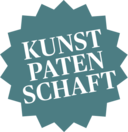Orientalisch: Schild: Adarga (Maurischer Schild)
vor 1492
Adarga (Maurischer Schild)
An adarga is a type of shield used by North African/Moorish mounted warriors and first adopted by Christian knights on the Iberian Peninsula in the thirteenth century. Later versions were even used in the Spanish colonies in Latin America. In the late Middle Ages, the city of Fez in Morocco was the leading production centre for high-end adargas. The name derives from the Arab word for shield (al-daraq), from which the term for a type of shield used in Europe evolved (German: Tartsche; Italian: targa; French: targe).
This adarga comprises two layers of leather, glued and sown together, with a pole strengthening the central axis. Originally round or oval, the shield assumed the shape of two overlapping ellipses (the top part is slightly wider than the lower part) in the fourteenth century; this adarga, the most beautiful extant shield of this type, is an excellent example. As was customary, its outside is plain, but the inside is embellished with delicate polychrome silk embroidery. The inscription running along the edge contains appeals to Allah; the upper part of the grip is inscribed ‘Allah the Ever Living’.
Its exquisite quality suggests that this adarga was made for an elite owner. Perhaps it was part of the spoils that fell into the hands of the Spanish after the fall of Granada in 1492. It was first recorded in the late sixteenth century in the collection assembled by Archduke Ferdinand II at Ambras Castle near Innsbruck. Sadly, we do not know how it got there.
Object data
Object Name
Orientalisch: Schild
Culture
Granada (Spanisch-Maurisch)
Dated
vor 1492
Material
Leder. Seidenstickerei. Füllung: Werg.
Dimensions
H 89 cm x B 75 cm
Inscribed
entlang dem Rande “Allah”, über den Handgriffen “Allah ist der Lebendige”
Image rights
Kunsthistorisches Museum Wien, Hofjagd- und Rüstkammer
Inv. No.
Hofjagd- und Rüstkammer, C 195
Permalink (citable Link) to this page: www.khm.at/it/object/373719/
Kunst & Patenschaft
This object is still without a Art Patron. Accept the patronage and make sure that this cultural treasure is preserved for future generations.
Your donation is a direct and sustainable contribution to the scientific documentation, research, restoration, and presentation of the artworks of the Kunsthistorisches Museum Wien.

